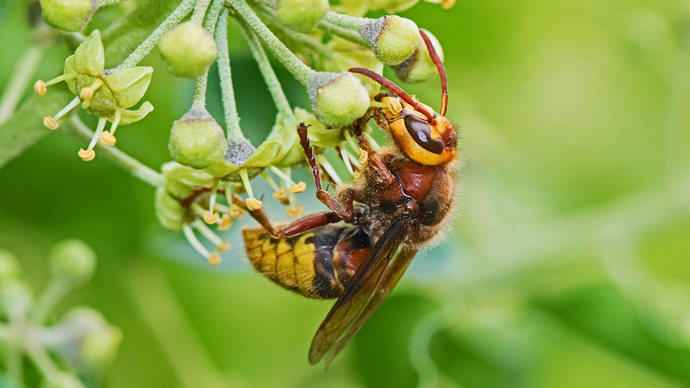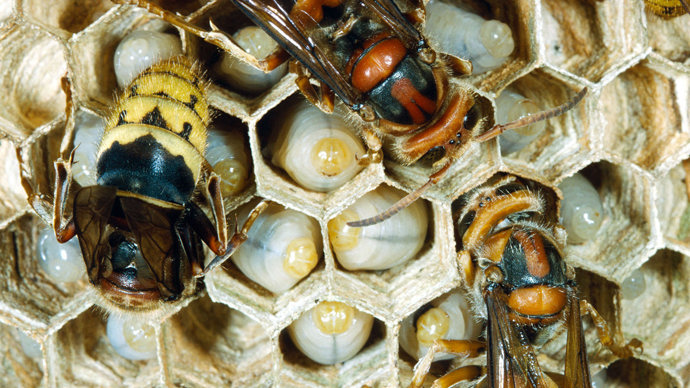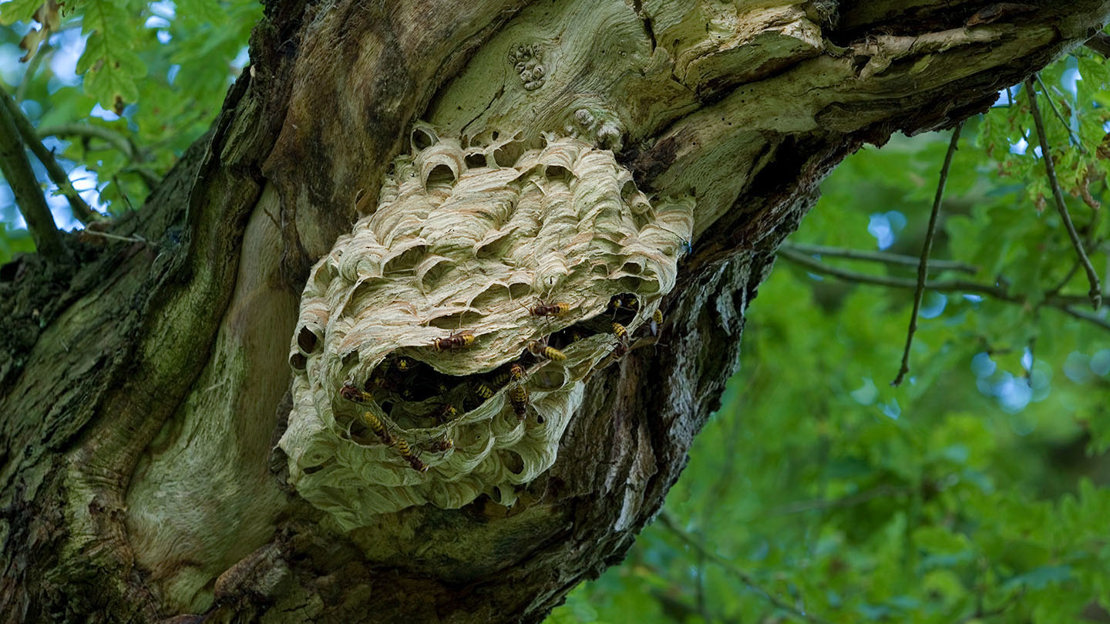Common name(s): European hornet
Scientific name: Vespa crabro
Family: Vespidae
Habitat: woodland
Predators: birds, lizards
Origin: native
The king of the wasps with a fearsome reputation, the hornet is actually much less aggressive than its smaller cousin, the common wasp.
Common name(s): European hornet
Scientific name: Vespa crabro
Family: Vespidae
Habitat: woodland
Predators: birds, lizards
Origin: native
Larvae: small white grubs
Adults: hornets are large wasps with yellow and brownish-red striped bodies, reddish wings and a yellow head. Queens are larger than the males and workers.
Wingspan: 2.5-3.5cm

Credit: Rod Williams / naturepl.com
Adults hunt a variety of invertebrates to feed the larvae. They change their feeding habits seasonally, foraging in the spring and summer and switching to scavenging in the autumn. They have a diverse diet, hunting large insects like dragonflies, beetles and moths. They even have a taste for tree sap, nectar and fruit.

Credit: ImageBROKER / Alamy Stock Photo
As social wasps, hornet’s lives revolve around the nest. Workers build large paper-like nests out of masticated wood and organic materials in dark and sheltered areas, such as hollow trees. Only queens of healthy colonies produce fertile eggs which are cared for by female workers. Over the year the workers maintain the hive while the queen lays eggs. Towards the autumn, the queen lays males (drones) and fertile queens, which leave the nest to mate and establish new colonies.
Once the new queens have mated, the old queen, her colony and the males die. The new queens hibernate over the winter then establish new nests in which to lay their eggs and the hatched workers take over maintenance, repeating the cycle.
While large and intimidating, much of the fear surrounding hornets is unfounded as they will only sting humans if threatened.
The hornet can be seen in a variety of habitats including woodland, grassland and urban areas. It is common in central and southern England and Wales, but populations are thought to be spreading further north.

Male hornets cannot sting.
Hornets are active between May and November, so this is the best time to see them. Listen out for the deep, noisy buzzing sound in parks, woods and gardens.
Hornets are relatively common and are not considered to be under threat.